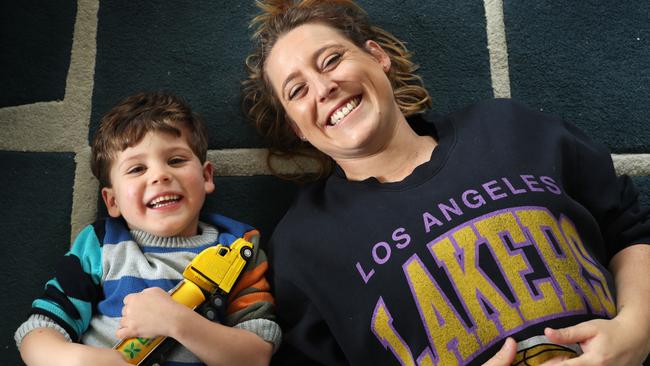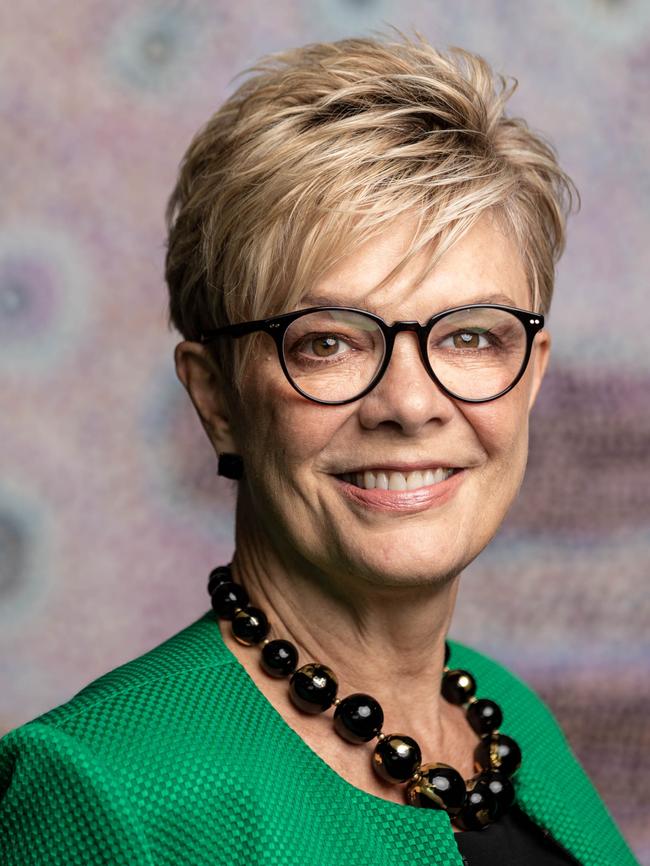Critically ill children to become beneficiaries of advances in DNA sequencing
As DNA sequencing moves from the laboratory to the clinic, critically ill children will be the beneficiaries.

When Maddison Elphick’s son Hunter was diagnosed with the rare genetic disease Duchenne muscular dystrophy, despite the shock and devastation of the poor prognosis, there was a strange sense of relief. “It wasn’t a shock. I knew there was something wrong,” Ms Elphick says. “And we finally found out what it was, and everything fell into place.”
Duchenne is characterised by progressive muscle degeneration and weakness due to a defective gene on the X chromosome associated with a protein called dystrophin, which plays a crucial role in keeping muscle cells intact. Smaller children experience only mild symptoms but deteriorate rapidly in late primary school and by 11 years old are often confined to a wheelchair. Life expectancy varies but many sufferers do not live beyond 30 years old.
When Ms Elphick first began to notice that her son was having problems with his bowels and was falling over frequently, she was sent down a series of rabbit holes checking gastrointestinal issues via blood tests and biopsies among other explorations. Hunter was finally referred to the Sydney Children’s Hospital at Westmead where genetic tests were carried out.
Three days after collecting a sample of Hunter’s DNA, the Duchenne diagnosis was delivered. In the flurry of therapeutic activity that followed, Hunter’s family found out that a world-first gene therapy clinical trial for young children with Duchenne’s was being run out of Westmead, and they rushed to sign him up for testing to see if he was eligible.
“I went through millions of battles in my own head wondering if it was the right thing to do but then your mum instinct takes over,” Ms Elphick says. “I just thought it was either going to make him the same or make him improve. So we got him in and we haven’t looked back.”
Hunter was among three of the youngest boys in the world to be dosed with a gene therapy for Duchenne when he received the single-shot treatment.

The trial uses a novel viral vector-based gene replacement therapy to target DMD at its root cause, replacing the faulty or mutated gene with a healthy, functioning version in a one-time, single-dose infusion. This is known as gene replacement therapy.
“The term gene therapy is a very broad term, and just generally refers to treatments that alter either the way in which a gene is read, or actually replace the faulty gene itself,” says Kristi Jones, principal investigator on the trial and staff specialist in Clinical Genetics at CHW. “I think the development of this therapy is going to happen very rapidly from now on. We’re right on the brink of moving from the trial space into the translation space.”
It was only just over 20 years ago that the whole human genome was mapped, opening the way for a new era in medicine in which decoding genes would allow not only the detection of genetic disorders in newborns, and the potential treatment of currently incurable rare diseases in children, but also the testing of embryos and reproductive carrier testing of parents so that such diseases can be prevented. The development of next-generation gene sequencing, that allows hundreds of genes to be simultaneously analysed at once for variation, has enabled DNA sequencing to move from the laboratory to the clinic.
“The first human genome mapping cost $3 billion and took 13 years,” says Kathryn North AC, Director of the Murdoch Children’s Research Institute the leader of Australian Genomics, a national network of over 100 institutions around Australia pursuing the goal of embedding genomic medicine in the nation’s health system. “Whereas today, for critically ill children, we can do sequencing with a turnaround time of three days at a cost of just a couple of thousand dollars. Eventually I think we’ll get into the hundreds of dollars. So there’s been a huge acceleration in the speed and the availability of genomic testing.”

It’s estimated that thanks to genomics, the genetic causes of around 50 to 60 per cent of rare diseases – which affect one in 12 children – have been identified. The ability to diagnose conditions makes an enormous difference to parents with children with devastating diseases, who in the past were simply told that doctors did not know what was wrong.
The ideal, thanks to genomics, is preventing the development of severe symptoms in such rare diseases, and the best way to do that is to identify genetic defects at birth.
Currently, newborns are given a heel-prick test, which screens for about 30 conditions. Genomics is only used to test for one of those conditions, spinal muscular atrophy (SMA), which was only recently put onto the national screening program.
But scientists are pushing for newborn screening to be expanded in future years via gene sequencing to hundreds of conditions – focusing on those that can be treated.
Head of the Division of Genetics and Genomics at Victorian Clinical Genetics Services Sebastian Lunke is leading a pilot study of 1000 babies examining the feasibility of implementing genomic sequencing as a first-line test in newborn screening.
There are many ethical and regulatory issues to be ironed out before genomic testing in newborns could be rolled out at a population scale, but Dr Lunke says its potential to reduce disease and disability in children through into adulthood is enormous.
“In my most optimistic scenario, this completely shifts the way we do healthcare in the future,” Dr Lunke says. “I think it would allow us to substantially shift from what’s currently an indication-driven healthcare system where you have to get sick before someone does anything about it, to a much more preventative health care system.”
“I think there will inevitably be children in future that if they hadn’t had genomic newborn screening, would have gotten severely ill.”
For those unlucky children who have been born with a genetic defect that causes a rare disease, hope is on the horizon. Many are looking at the example of gene replacement therapy for SMA, which now provides a life-changing treatment for children with the devastating and fatal genetic condition, and daring to hope that other rare and disabling conditions may in future be similarly treatable.
“We may not have precise therapies for all diseases, but the number will increase rapidly,” says Professor North. “It’s about giving children that opportunity to live a healthy and fulfilled life to reach their potential, but also to have a really good quality of life.”
For little Hunter, a year on from his gene therapy dosing, life is blessedly progressing normally. Ms Elphick says she can see a difference in her son and hopes the therapy is working to restore the health of his muscles.
“He’s not falling over as much, he’s running around, he’s hanging off monkey bars, he can walk up stairs one foot at a time,” Ms Elphick says. “It’s all those little things that we celebrate now.
“It’s really good he’s been able to get the therapy at this age because there isn’t a lot of damage done yet. He’s caught up with his classmates now, he’s having fun. I’ve got really high hopes.”



To join the conversation, please log in. Don't have an account? Register
Join the conversation, you are commenting as Logout